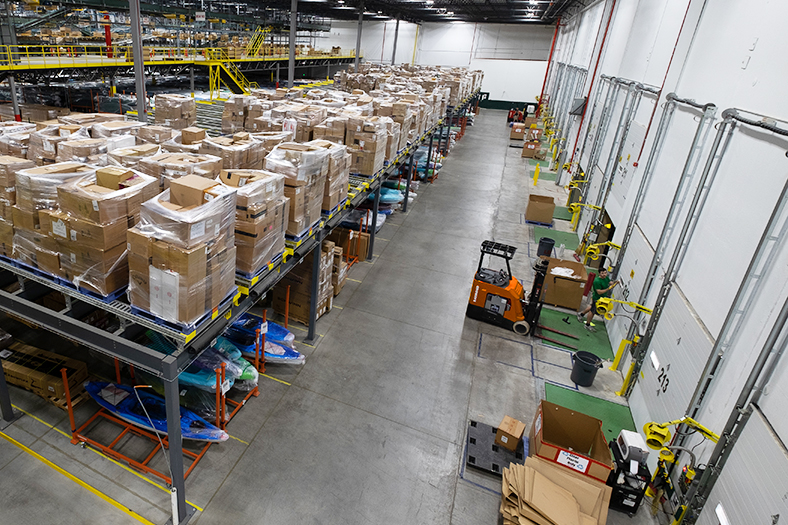Insider Tips for Warehouse Automation

Warehouse automation is the process of implementing software, equipment, and robotics that allow you to rely less on human labor, so you can increase efficiencies. When it comes to organizing, moving, stacking, and packing products within a storage facility, there are many opportunities and options available for automation.
When does warehouse automation make sense for your operation?
One of the key decisions an owner or manager has to make is when to automate their facility. Many types of automation require significant capital investment and upfront costs, so the right timing is crucial. Before considering any level of warehouse automation it’s important to evaluate all of your processes and procedures, examine your supply chain, identify gaps or chokepoints in your current operation, and understand what types of warehouse equipment would be suitable for your facility.
Here are several questions to ask yourself to help determine if you would benefit from possible options for automation:
- Are your current warehouse practices labor intensive?
- Do consistent labor shortages lead to delays?
- Is your order fulfillment capacity declining?
- Does customer feedback indicate issues with order fulfillment?
- Do you regularly have to increase or decrease your workforce to meet fluctuations in demand?
- Do you often have out of stock items?
If you answered “yes” to any of these questions, then you definitely have areas of opportunity for warehouse automation.
Understand the different types of warehouse automation
The three primary benefits of implementing warehouse equipment and software are: reducing dependence on labor for highly repetitive tasks, making human labor more efficient, and minimizing human error. Here are several types of warehouse automation that help you accomplish these goals:
Automated Guided Vehicles (AGVs)
AGVs are automated forklifts and pallet jacks that transport goods between different points in your warehouse without needing a driver. They can move products between various picking areas, connect your storage areas to the production line, and bring pallets to the loading dock, to name just a few possible tasks. Modern automated guided vehicles have the capability to follow a predetermined route, learn the floorplan of your facility, and avoid obstacles or obstructions. They allow you to continuously move product 24/7, limit the risk of accidents, and help you reduce dependence on labor by eliminating drivers.
Auto-Picking Robots
Another area of opportunity for warehouse automation is picking and placing. Powered by artificial intelligence, picking robots have the ability to grab, sort, and pack different products with a large amount of flexibility. They can identify millions of products without any training, can operate without human input 24/7, and a single arm can pick and place unique combinations of products from multiple totes. These advanced AI robots will also continuously learn and improve accuracy the longer they handle a task.
Automated Sortation Systems
Sortation is the process of identifying items on a conveyor system and diverting them to a warehouse location using RFID, barcode scanners, and sensors. Companies use automated sortation systems in order fulfillment for receiving, picking, packing, and shipping. Similar to AGVs and picking robots, this type of warehouse automation allows your operation to work around the clock, increases throughput, and minimizes the chance of operator error.
Use a warehouse management system
In addition to physical warehouse automation equipment that allows you to move product quickly and efficiently, it’s also important to implement a management system. By automating data collection, you will able to keep track of what’s going on in your warehouse, where slow points in your process are, and when you need to stock up on different products or materials. Warehouse management software will help your staff keep your shelves stocked and can even be integrated with many types of warehouse equipment, so your entire operation works seamlessly.
Determine which warehouse equipment is right for you
The key part of implementing warehouse automation is choosing the correct options for your operation. You have to take into consideration your type of product, the size of your facility, and which parts of your current process require the most improvement. That process requires evaluating and collecting data on your current systems.
At JIT, we have a team of automation experts who can help. We offer a wide variety of warehouse equipment solutions, and we will look at your current operation, labor requirements, and other factors to determine where automation will make the biggest difference in boosting efficiencies. We’ll help you overcome labor shortages, improve order accuracy, boost employee efficiency, and more.
If you’re unsure which type of warehouse automation is right for you, contact our team today!
